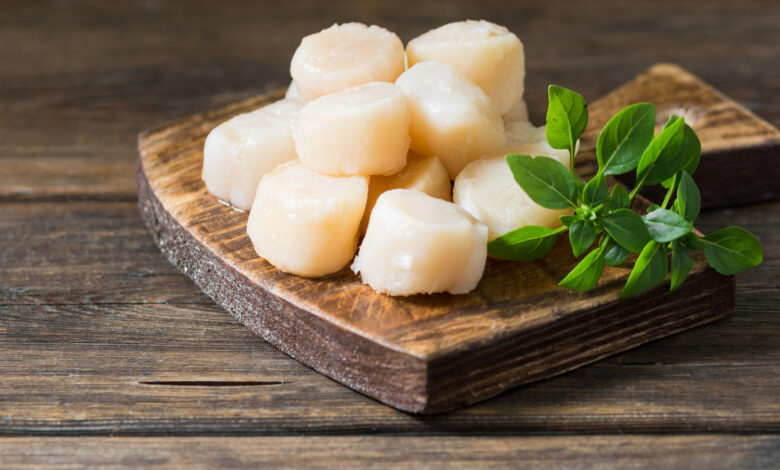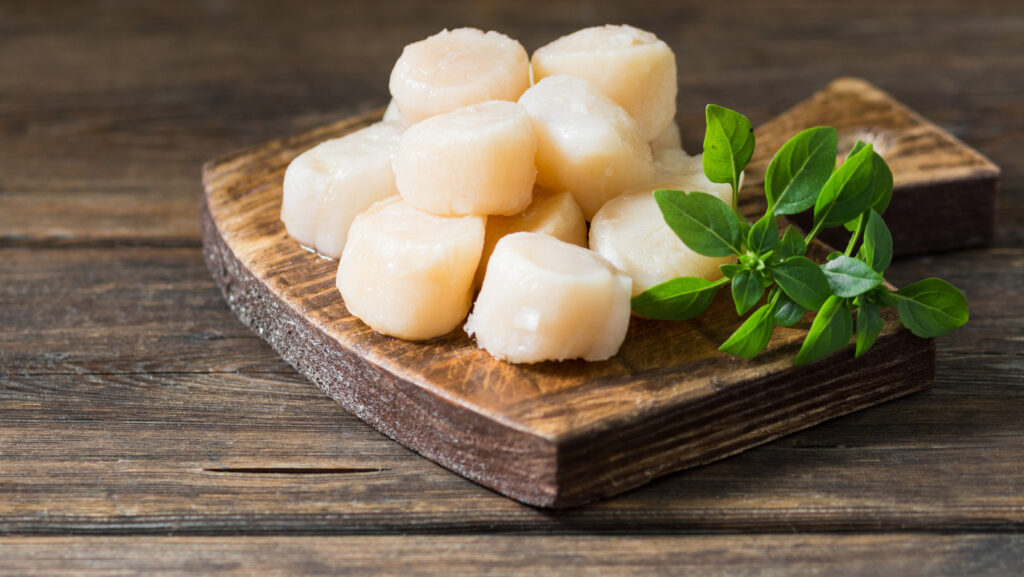Scallop Foods: Sea Scallops vs Bay Scallops

Like oysters, mussels, and clams, scallop foods are a kind of bivalve mollusk, meaning that the internal muscle is encased in two shells. Scallops feature a brilliant orange region called the coral within their shell, and a white adductor muscle (the part we eat) that opens and closes the shell. When cooked, the muscle is soft, with a hint of sweetness and briny saltiness. You may eat the coral as well. Scallop foods come in two varieties: sea scallops and bay scallops. While sea scallops may reach up to two inches in size, bay scallops are more delicate and smaller—roughly the size of a cent.
It’s crucial to remember that the techniques used to prepare bay and sea scallops vary somewhat. Because of their chewier texture, sea scallops are more suited for searing to get the ideal crispy finish. Bay scallops, on the other hand, cook rapidly. It is best to use broiling and gently poaching. Both bivalves turn out wonderful when grilled; just be sure to use skewers to prevent losing any valuable scallops and to make turning easier. Before putting scallops on the grill, always pat them dry. Both types of scallops provide a soft, sweet-yet-briny flavor when cooked correctly.
Distinctions between Sea Scallops and Bay Scallops
Here are the distinctions between sea and bay scallops, from harvesting to size, so you can decide which is best for your dish.

Sea scallops are bigger than bay scallops—three times larger, to be exact—but they also have a chewier texture. Though most abundant in the autumn and winter, these mollusks are collected in seas off the East Coast as deep as 200 meters year-round.
The seagrass beds of estuaries, bays, and harbors in Atlantic coastal waters, extending from New Jersey to the Gulf of Mexico, are home to little bay scallops.
Choosing Scallop Foods
Which scallop foods you purchase depends on how you want to prepare them. Choose the bigger sea scallops if you want to offer them as the main meal. You may pair them with your preferred sides to complete the dinner, and they are hefty enough to sear.
A less costly alternative that works well in pasta or salads is bay scallops. Simply keep an eye on the pan to prevent a rubbery texture—bay scallops cook fast due to their tiny size. They are best used for broiling or sautéing since they tend to overcook.
Select big, dry-packed scallops for the tastiest cooked scallops. After patting them dry and seasoning them, sear them for 1 ½ to 2 minutes on each side over high heat in a pan with a little butter. When they are seared, they will adhere to the pan and then come off.
Methods for cooking Scallops
The method used to collect scallops has a direct effect on the way they are cooked, taste, and texture. Knowing whether your scallops are dry-harvested or wet is important. After being picked, wet scallops are submerged in a bath of chilly seawater that has been supplemented with sodium triphosphate, an artificial preservative. The scallops plump up and seem unnaturally bigger than their weight at harvest as a result of this procedure. But it also makes it very difficult to fry them, even after the scallops have been thawed and dried. Moreover, you wind up paying for water weight instead of real meat. Only use wet scallops in dishes (like chowder) if the texture of the scallops isn’t essential.
Without the use of chemical preservatives, dry scallops are picked, shucked, cleaned, and flash-frozen in less than four hours. They may have a reduced shelf life, but they still have the same texture and form. A lot of customers report they can distinguish between wet and dry scallops, with the former having a soapy flavor. Whenever possible, use dry scallops for pan-searing.


